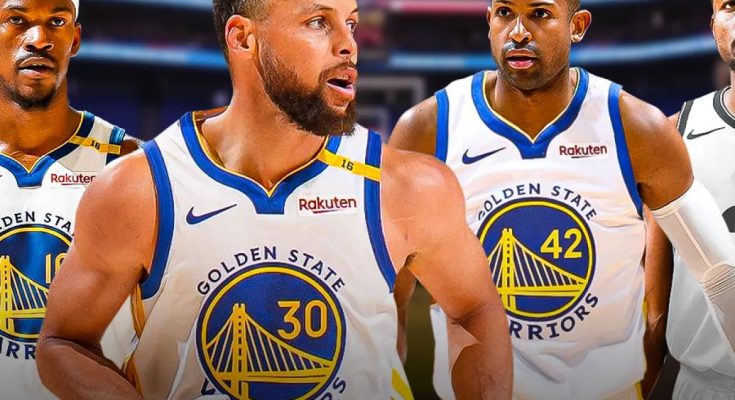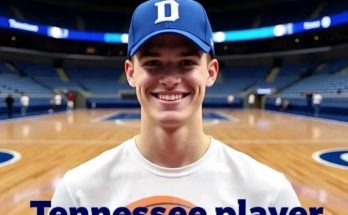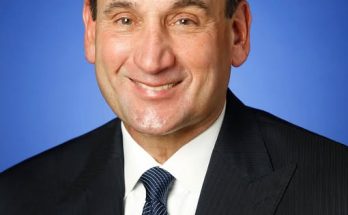The NBA offseason is always a breeding ground for speculation, and this summer is no different. One of the more intriguing rumors to surface involves the Golden State Warriors, the Chicago Bulls, and a potential third team coming together in a blockbuster trade that would reportedly send a \$45 million-valued player from Golden State to Chicago. While no official details have been confirmed, the rumor mill has sparked plenty of discussion, especially given the evolving dynamics within both franchises. The name most often attached to the speculation is Jonathan Kuminga, a promising but sometimes inconsistent young forward who has shown flashes of stardom but has yet to fully secure a long-term role within the Warriors’ aging core.
Kuminga, still only in his early twenties, has been viewed as one of the more intriguing young players in the NBA. His athleticism, defensive potential, and ability to score in transition make him a valuable asset, particularly for teams looking to retool or build for the future. Golden State reportedly offered him an extension in the ballpark of \$45 million, which he turned down, signaling either a desire for a larger role or a higher payday. That rejection fueled speculation that the Warriors might be exploring trade options before committing long-term to a player whose fit alongside Stephen Curry, Draymond Green, and their timeline is uncertain. From Golden State’s perspective, trading Kuminga isn’t necessarily about giving up on his potential. It’s more about aligning their roster with the remaining championship window of their core players. With Curry not getting any younger and the team investing heavily in veterans like Draymond and the newly acquired Jimmy Butler, the Warriors might not have the luxury of waiting for Kuminga to develop into a star. Instead, they could opt to use him as a trade chip to acquire more immediate help or gain financial flexibility.
Enter the Chicago Bulls, a team stuck in a strange limbo. They’ve been competitive enough to hang around the Play-In Tournament but not strong enough to make any real noise in the playoffs. The Zach LaVine situation continues to hover over the franchise, and while they have pieces like Coby White and Ayo Dosunmu showing promise, the Bulls lack a clear direction. Adding a player like Kuminga could help shift the focus toward a youth movement while still remaining competitive. His skill set would fit well with a team looking for a jolt of athleticism and energy, especially if they’re preparing for life without LaVine or even DeMar DeRozan. The idea of the Bulls acquiring Kuminga makes sense from both a basketball and a business perspective. He’s young, marketable, and could thrive in a bigger role than he had in Golden State. Chicago also has the cap space and assets to make such a deal happen, particularly if a third team is involved to help smooth out salaries and player fits.
The third team mentioned in the rumor, though not named definitively, is believed to be one with cap flexibility and a willingness to absorb contracts or contribute a useful role player. Teams like the Indiana Pacers or the Utah Jazz come to mind as possible facilitators. In many three-team trades, one team typically acts as the salary absorber or sweetener provider, taking on expiring deals or sending out veteran role players to make the deal viable from a financial standpoint. For Golden State, the benefits of a trade like this are multi-layered. First, they would move a player who’s due a new contract and may not be part of their long-term plans. Second, they could bring in veteran help or draft assets that are better aligned with Curry’s timeline. Third, they could ease some of their luxury tax concerns, which have become a major issue in recent years as the league tightens financial rules on repeat offenders. The new collective bargaining agreement makes it even harder for teams to carry bloated payrolls without penalties, so clearing some money off the books while remaining competitive is a logical move.
From the Bulls’ angle, trading for Kuminga means betting on upside. They’d be investing in a player who hasn’t yet reached his ceiling but has shown enough to warrant real attention. Whether it’s throwing down monstrous dunks, defending multiple positions, or running the floor with elite speed, Kuminga brings something Chicago currently lacks—explosiveness and positional versatility. If the Bulls are serious about reshaping their roster around a younger core, Kuminga could be a cornerstone in that process. A deal involving Kuminga could see the Bulls part with players like Coby White, who had a breakout season and could provide the Warriors with backcourt depth and outside shooting. Alternatively, a package involving Ayo Dosunmu and another young player or pick could also be structured to make the money work. In either case, it’s about matching value, both in terms of talent and contracts.
The inclusion of a third team adds complexity, but also makes the trade more realistic from a cap standpoint. For example, if the Pacers were the third team, they might send out a player like Jalen Smith or a future pick to Golden State, while taking on an expiring contract or veteran from the Bulls. These kinds of deals often come down to timing and mutual incentives. If each team sees a path to either contend, rebuild, or retool, the likelihood of a deal increases. There are, of course, risks on all sides. For Golden State, moving on from Kuminga could backfire if he breaks out in Chicago. They’ve already parted ways with several young players over the years, including James Wiseman, without getting a full return on investment. Giving up another high-potential player might not sit well with fans unless the return is substantial. For the Bulls, betting on potential always carries the risk that it never materializes. Kuminga’s development has not been linear, and while his highlights are impressive, his consistency and fit in a structured offense are still in question. If they move key pieces for him and he doesn’t pan out, it could set the franchise back even further.
Another factor to consider is chemistry. Kuminga didn’t always see eye-to-eye with the coaching staff in Golden State, with reports at times suggesting frustration over playing time and role clarity. That dynamic could be different in Chicago, especially if the team is more focused on youth development. Still, any team acquiring him will need to fully invest in his growth, both on and off the court. For now, the trade remains a rumor, albeit a persistent and intriguing one. The timing makes sense. The Warriors are at a crossroads, trying to balance championship aspirations with cap constraints and aging stars. The Bulls are in search of direction, knowing that their current path is leading to mediocrity. And third teams around the league are always looking for ways to extract value from facilitating deals between larger-market franchises. It’s not hard to imagine executives having exploratory conversations, even if nothing is imminent.
This rumor also highlights how much the league has shifted in terms of asset valuation. Not long ago, a player like Kuminga, with elite athletic tools and upside, would be nearly untouchable. But in a league where development windows and championship windows rarely align, even promising young talent becomes trade bait if the timeline doesn’t match. For Golden State, this isn’t just about Kuminga. It’s about building a team that can give Stephen Curry one more legitimate run at a title. That means making tough decisions, and sometimes moving on from players who might blossom elsewhere. For Chicago, it’s a potential leap of faith, trusting that a change of scenery and more opportunity will unlock a higher ceiling. They’ve been treading water for years, and adding a player with Kuminga’s potential could finally help them pivot toward a more exciting future.
As for the unnamed third team, they’re likely waiting for the right opportunity to jump in. Whether it’s to acquire a pick, absorb a bad contract, or flip a veteran for a younger asset, the incentive is always there for a savvy front office to insert itself into the conversation. These are the deals that often get finalized late in the process, once the main players have agreed on core terms. Ultimately, whether this blockbuster trade materializes or not, it speaks to the larger questions facing both the Warriors and Bulls. Are they willing to take bold risks to change their trajectories? Can they balance ambition with prudence? And which front office blinks first when it comes to parting with valuable assets?
Only time will tell. But if the rumor proves true, it could represent one of the most significant moves of the offseason—and a major gamble for everyone involved.



